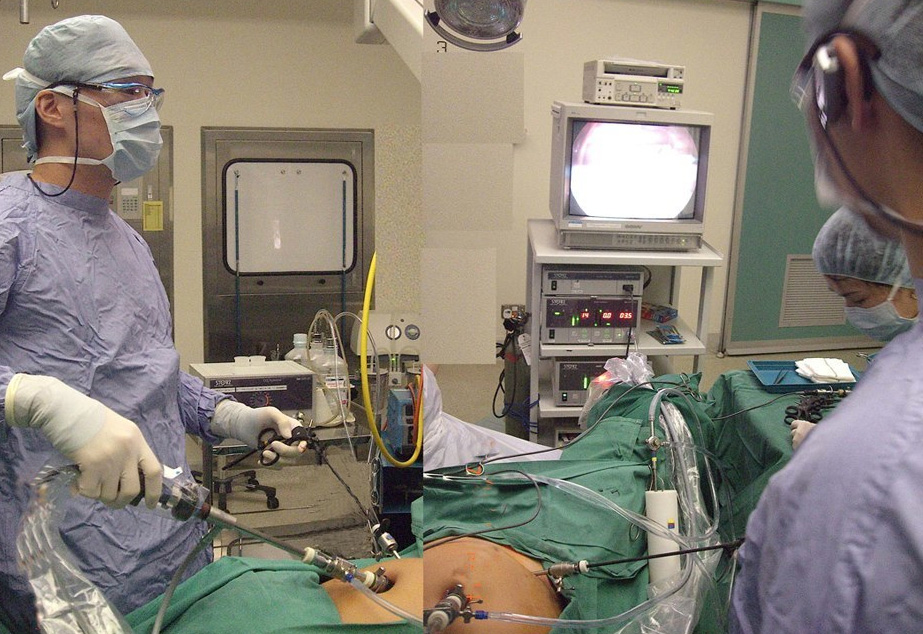Laparoscopy Keyhole Surgery
Minimally Invasive Surgery
 |  |
Dr Anthony Siow has a special interest in Keyhole Surgery, otherwise known as Laparoscopy or Minimally Invasive Surgery. He was awarded the Singapore Government Scholarship for Advanced Laparoscopic Surgery in Sydney, Australia. He spearheaded the KK Laparoscopic Fellowship Training Program, when he was the Director of the KK Minimally Invasive Surgery Centre. His passion for teaching Advanced Laparoscopy attracted specialists from the region to train with him. He was awarded Outstanding Clinical Teacher in 2007 and appointed Visiting Professor for Laparoscopy to University of Philippines in 2009.
Dr Anthony Siow performs most of his surgeries by Laparoscopy because he strongly believes Keyhole Surgery gives women the best surgical outcome. For suitable cases, Single Incision Laparoscopy can be the next option for reducing the surgery to Just One Cut.
What is Laparoscopy Key Hole surgery and how is it done?
Laparoscopy Key Hole Surgery, is a form of major surgery that is done with three to four small cuts in the abdomen. In Laparoscopy, a 1cm cut is made at the umbilicus and two to three 0.5cm cuts are placed in the lower abdomen. Using slender camera and operating instruments inserted through these cuts, major surgery is done within the abdomen.
What surgeries can be done?
Most if not all early gynaecological surgeries can be done with Laparoscopy Key Hole Surgery ranging from surgical investigation procedure like fertility workup to major surgical treatment, at the same setting. Laparoscopy can be done for:
❖ investigation for infertility and pelvic pain
❖ assessment of pelvic tumors
❖ removal of ovarian cyst (cystectomy)
❖ removal of ovaries (oophorectomy)
❖ removal of fibroid (myomectomy)
❖ removal of womb (hysterectomy)
❖ treatment of ectopic pregnancy
❖ reconstruction of womb prolapse
❖ restoration of pelvic anatomy
❖ tubal function reconstruction for fertility
❖ endometriosis surgery
Where surgery is advised, up to 85% of ovarian cyst, 55% of fibroids and 40% of abnormal womb requiring removal, can be done by Laparoscopy. For conditions that are not too severe or large, Single Incision Laparoscopy can be the alternative for a better recovery and outcome.
What are the benefits?
The main benefits are
❖ Less pain from smaller cuts (1-2cm) as compared to traditional surgery of 10cm incision
❖ Less infection and surgical wound breakdown
❖ Less adhesion formation (post surgery internal scar) and a better fertility potential
❖ Faster recovery and shorter hospital stay
❖ Less scarring and excellent aesthetic result especially for Single Incision Laparoscopy / Scarless Laparoscopy
How will I feel after Laparoscopic surgery?
When you wake up from surgery, you may feel some sore throat, drowsiness and nausea from the anesthesia. Occasionally, your tummy may feel bloated from the surgery. Infrequently there may be backache or shoulder tip pain. These symptoms will resolve over time and generally disappear after 48 hours.